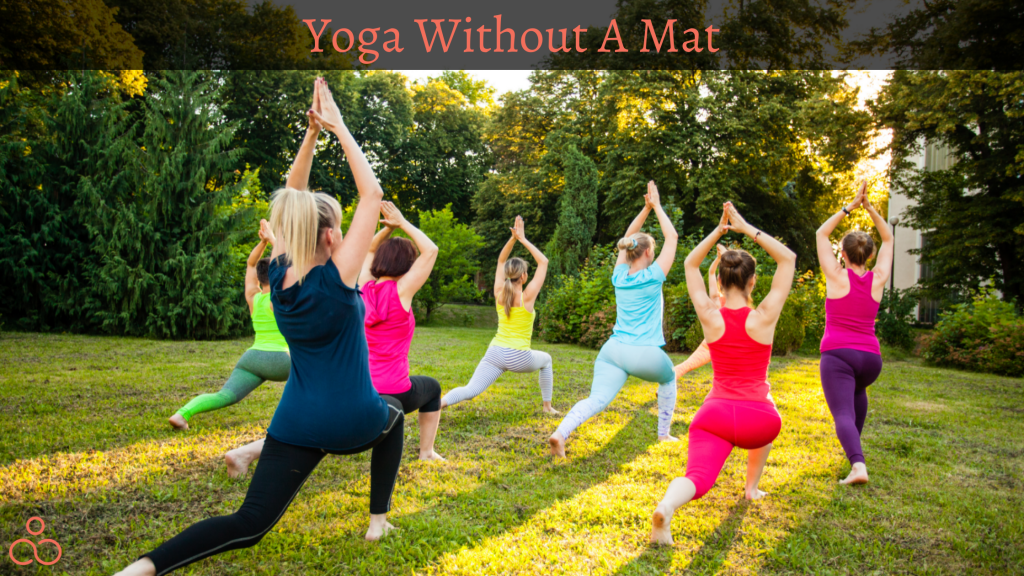Ever practice yoga without a mat? If not, try now! Yoga without a mat has numerous advantages and can be more practical and pleasant than before. You don’t need to carry your yoga mat in your car or bring it with you everywhere. Yoga on the bare floor, or even outdoors in nature, has several advantages because there is no requirement for mats or towels, and it could be more stimulating for your body and mind than ever before! Let’s face it, yoga mats may be pricey, and occasionally they develop an unpleasant odor too. Read on to know more about its advantages and drawbacks.
Is a yoga mat necessary for yoga?
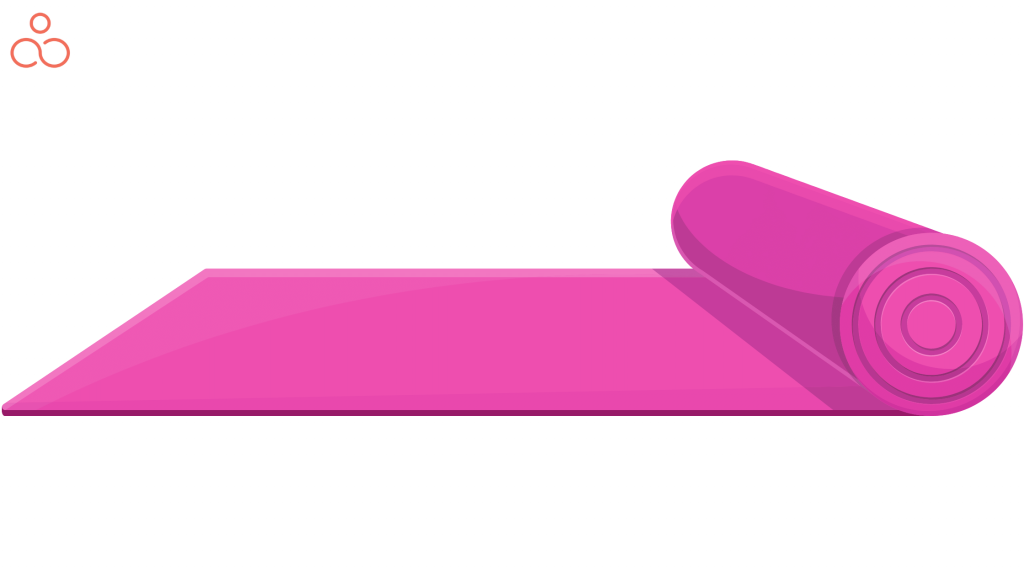
With the use of a yoga mat, you may minimize your chance of slipping out of the position and hurting yourself by having a sturdy, non-slip surface. But is a yoga mat truly required for doing yoga? No! Your body is all that is required to begin practicing yoga. However, for people who are new to yoga or who practice vigorous and quick yoga types, using a yoga mat is still advised.
Are you unsure about the necessity of a yoga mat? Padding and traction are the main justifications for using a yoga mat. Your hands won’t slip in Downward Dog the instant you start to perspire, thanks to the yoga mat’s non-slip surface. Additionally, it is more pleasant to practice on a yoga mat’s cushioned but solid surface if you have sensitive or aching knees and wrists.
Nevertheless, there are several benefits to not utilizing a yoga mat as well. Yoga without a mat is a genuinely freeing experience, whether you’re trying to live more sustainably or the strange scent of modern yoga mats gives you a headache.
Can You Do Yoga Without a Yoga Mat?
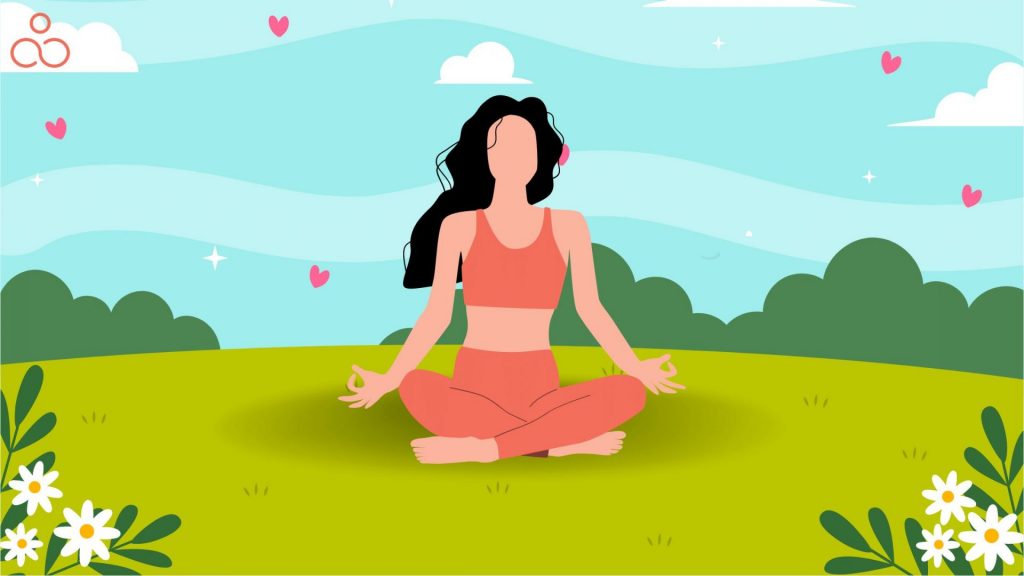
With or without a yoga mat, you may establish a strong yoga practice. Although there are many options for yoga mats, do you need one? It depends, but it is not mandatory!
Could you practice yoga without a mat? It is possible to do meditation without a mat. Yoga mats are unquestionably helpful when doing yoga positions. However, you may utilize straightforward household objects in place of a yoga mat. The mere absence of a yoga mat does not exclude you from enjoying the health advantages of the practice. Everyone and anybody may do yoga anywhere, and it is a wonderful exercise for the soul, body, and mind.
Do Yoga Practices Require a Yoga Mat?

Yoga is a restorative exercise that has a great impact on your overall and mental health. Yoga may immediately bring to mind numerous seated and lying postures whenever you think of it. These poses naturally lead one to believe that a yoga mat is necessary for practicing yoga.
You should also be aware that current store-bought yoga mats were not available when yoga first appeared in India, some 5,000 years ago. Don’t let the fact that you don’t currently have a yoga mat prevent you from enjoying the advantages of this ancient practice. Ideally, you should spend money on a good yoga mat if you want your yoga practices to last a lifetime. You have a lot of additional mat options, or you can forgo a mat altogether if you’re just starting or are traveling but still want to practice yoga.
Yoga without a mat: Benefits and Drawbacks
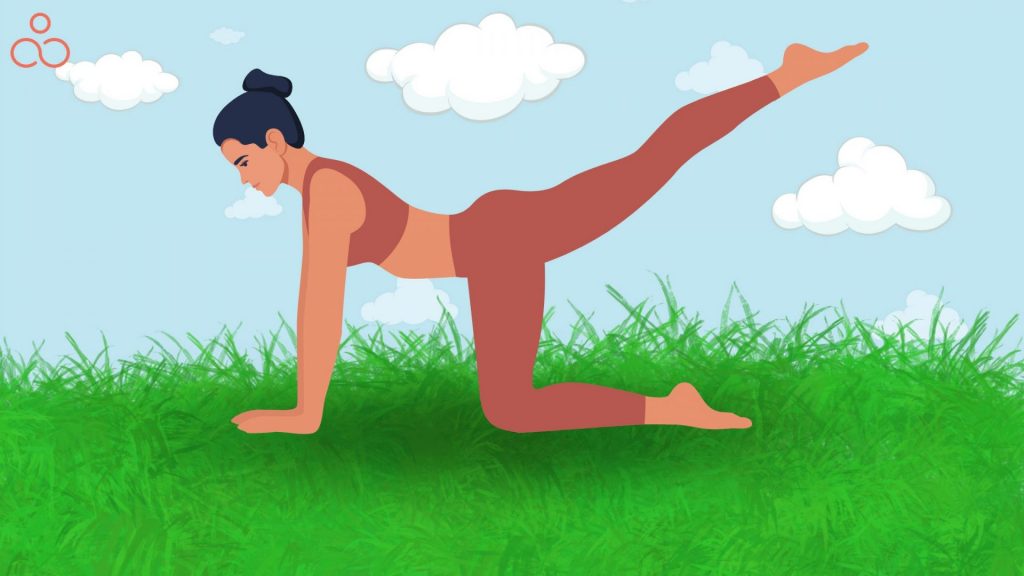
There are several benefits of doing yoga without a mat. The mat may be a helpful guide and alignment aid when you are just starting. As you advance, though, you might like to have fewer limitations when practicing yoga. Sometimes the mat’s stickiness might get in the way of your movements, and sticking to its boundaries can severely limit your range of motion.
For instance, you can slip your feet between poses when practicing yoga without a mat. Typically, yoga mats are too sticky to permit this, so you must pick up various body parts from the mat and plant them instead. For a beginner, the mat’s stickiness could be useful, but for an experienced practitioner, it might just be constrictive.
Due to their belief that yoga mats are bad for the environment, many people also choose not to use one. Use a towel or blanket for comfort if you require a partition between yourself and the ground. Alternatively, it could be a good idea to practice yoga outside as exercising on more erratic surfaces like grass or sand can help you improve your foot placement and develop your balance.
What Drawbacks Come with Not Having a Yoga Mat?
- Without a yoga mat, you run the risk of causing more damage to your joints when practicing yoga. To safeguard your spine or other vulnerable regions, some postures necessitate the use of a mat.
- Without a mat, it could be challenging to maintain some postures, such as the downward dog, because there is nothing to push off of.
- Additionally, if you’ve never practised Pilates on a mat before, you are more prone to trips and falls.
- If the climate outdoors is not supportive, then you might have to practice yoga indoors and it is advisable to have some padding to avoid unwanted injuries.
- While the connection with nature is all good to read, most people might not like their clothes getting soiled or placing their bare feet and hands in mud and dirt outdoors.
What are the Advantages of Yoga Practice without a Mat?
- Yoga is incredibly comfortable to do on bare flooring. Towels and mats are not required! You don’t have to worry about carrying them about with you or about them eventually smelling bad.
- The absence of sharp edges that might damage your joints is another advantage. Compared to when you use mats, doing yoga without them won’t put as much strain or pressure on your bones and muscles.
- Because there are no restrictions, you can do it anywhere—at your house, on the street, in nature, etc.—it may also seem incredibly expansive and liberating. It allows for more opportunities to experiment with novel stances in various settings.
What else can I use in its place?

Try practicing on the floor with a sheet or towel instead of a yoga mat if you want to accomplish some postures but don’t have a mat handy. Alternately, get outside and locate some smooth surface to practice your postures on. You are in charge! The good news is that there are several alternatives to a yoga mat if you wish to practice yoga on anything else. The yoga mats change along with yoga and yogis. The yoga mat is considered a changing and improving object, ranging from straightforward woven blankets to PVC pipe yoga mats to vegan environmentally-friendly yoga mats. Numerous yoga mat substitutes have also emerged as a result of all the advancements in yoga mat technology.
The majority of the below-listed solutions are accessible within or close to most residences:
- Carpet
- Floor bed
- Beach towel or microfiber towel
- Woven blanket
- Grippy socks
- Cotton rugs
- Grass carpet
- Outdoors on the beach or on lawn grass
Is Yoga Still Effective Without a Mat, though?
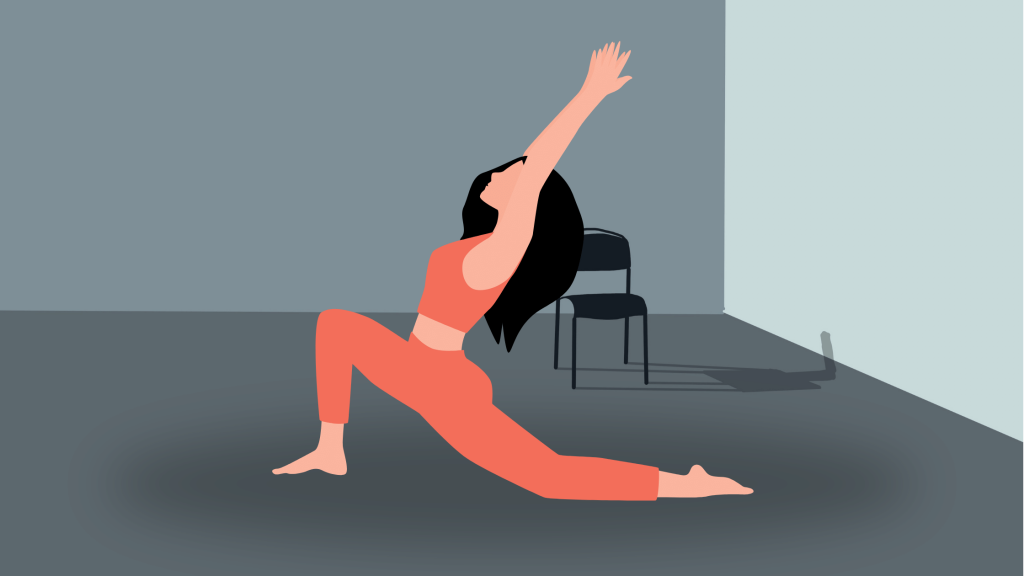
It’s vital to keep in mind that each position has varying degrees of difficulty. Because you won’t have the same support for your back or bones as you would on the floor, you could find some poses easier, but others, like a downward dog, will be more challenging (for lack of a better place to push up from). It’s crucial to experiment with every yoga position either with or without a mat based on your degree of comfort because various poses demand varying levels of support.
Yoga Positions That Do Not Require a Mat
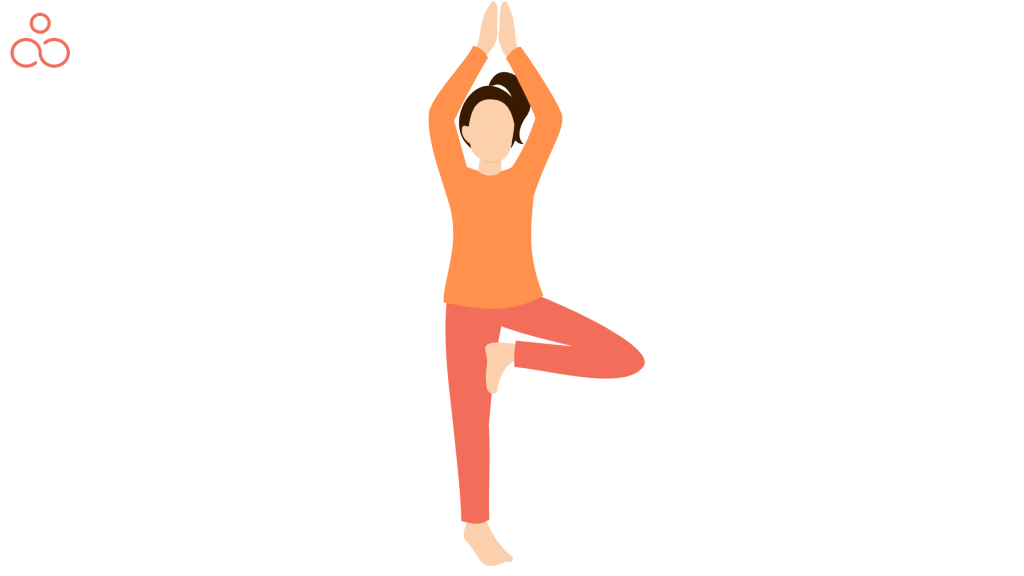
You now understand the advantages of yoga mats and the plethora of yoga mat substitutes available to you. You may also practice certain yoga positions that don’t even require a mat and are suitable for beginners. You may practice many different yoga positions without a mat; here are a few of them.
Mountain Pose: Every yoga practice should begin with a mountain pose. It has several advantages, but it is also performed without a mat almost everywhere.
Inhale and exhale as you stand tall with your feet close, keep your arms at your sides, and keep your feet firmly planted on the ground.
Although it appears to be a pretty inactive position, this one is excellent for posture, balance, attention, and body awareness. You won’t need to have a yoga mat for this position because just the bottoms of your feet are touching the floor.

Tree Pose: Tree posture may be one of the most basic poses, just like the Mountain pose, but it’s also a crucial part of any yoga practice. No matter where you are, mat or no mat, it is simple to perform.
Keep your pelvis straight, bend your right knee, place the sole of your right foot on the inside of your left thigh (without contacting the knee), stand tall, and lift your arms so that your palms are touching. This yoga stance tests your balance and strength, so it’s not as easy as it might seem. There is no need for a yoga mat for this beginner to an intermediate position.
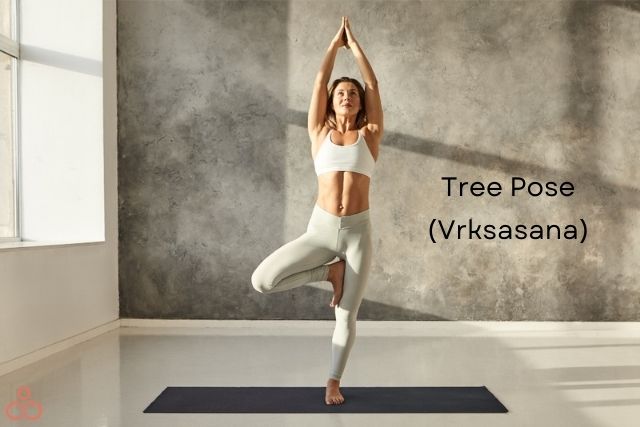
Downward Dog: You may understand how this stance gained its name if you’ve ever watched a dog stretch out after a lengthy slumber. And you know it must feel fantastic for your dog to be stretching like this. Dropping everything to do with a downward dog helps so many muscles relax and decrease stress. But you can do it without a mat.
Standing up, maintain your legs up or slightly bent, and lay your palms shoulder-width apart on the floor far in front of you. The wrist creases ought to be aligned to the mat’s front, and the feet should be firmly planted. This well-known yoga position is excellent for balancing, strengthening the core, extending the hamstrings, and improving circulation. You may do this posture with both hands and feet on the ground if the surface is clean.

Is it bad to do yoga without a mat?

No, practicing yoga without the need for a mat is not terrible. You should surely disregard all the traditional yoga norms and “go mat less” if not possessing a yoga mat forces you to put off starting your practice or skip a session. I’d even venture to claim that, with additional care, “going mat less” for yoga can be just as safe as using a mat.
When you practice yoga without a mat, you have the freedom to do so wherever you are, whether on the road or during your lunch break at work. Additionally, when doing yoga outside, there is nothing better than forgoing a yoga mat. An excellent method to center yourself and connect with nature is to practice yoga postures barefoot on grass or sand. Nature provides the finest protection for your elbows and knees.
Additionally, practicing yoga without the need for a slippery yoga mat will need considerably more effort from your muscles:
- Your core will need to work extra hard to keep you steady throughout transitions from Downward Dog and when in Downward Dog.
- As you transition between positions without the aid of a sticky surface, your grip strength will increase.
- In standing positions, your legs will work more to keep you supported.
Can you do yoga without getting on the floor?
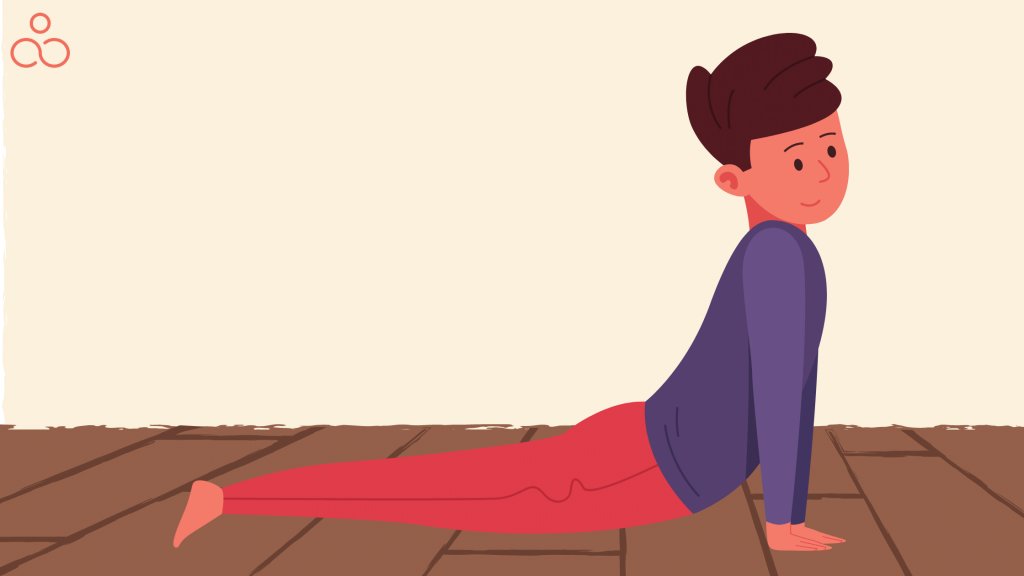
You could still learn to practice and get the benefits regardless of whether any of the yoga mat options work for you. Here comes standing yoga. Yoga while standing is a fantastic technique to increase strength and balance without lying on the floor. It requires practically minimal room, and you may do it without a mat or any other yoga equipment. The majority of the time, standing yoga routines are also wrist-free and will test your flexibility and stamina while keeping you safe. No mat is necessary!
What are the few tips to practice yoga without a mat?
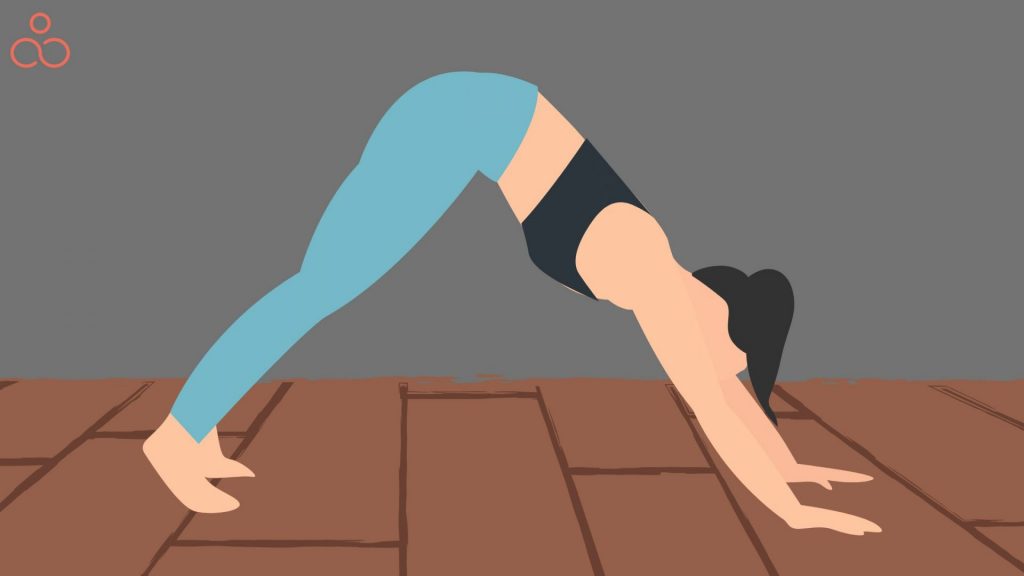
While all the above sections explain a lot of details, here are a bunch of quick tips that might help you:
- Stick to standing poses
- Be flexible and dynamic with your practices
- Get creative with sequences
- Experiment with surfaces to find one that best suits you
- Stay close to walls for quick additional support, if needed
- Choose clothes that cover you well in case of unexpected falls
- Savasana or corpse pose outdoors without a mat could get tricky, try alternatives!
- Keep an eye open to other practitioners with similar routines
- Try to go deeper in poses and stay self-motivated
Conclusion
Yoga practice on the floor offers many more advantages for your body, so if you’re considering doing it, I say go for it. You can see that there are several methods to do yoga without the need for a mat. You can get extra direction from well-known yoga practitioners if you so want. You can follow the tips given above and decide which options are most helpful to you. Whether you use a yoga mat or not, the most important thing is to pay attention to your body and make the most of your routine.

